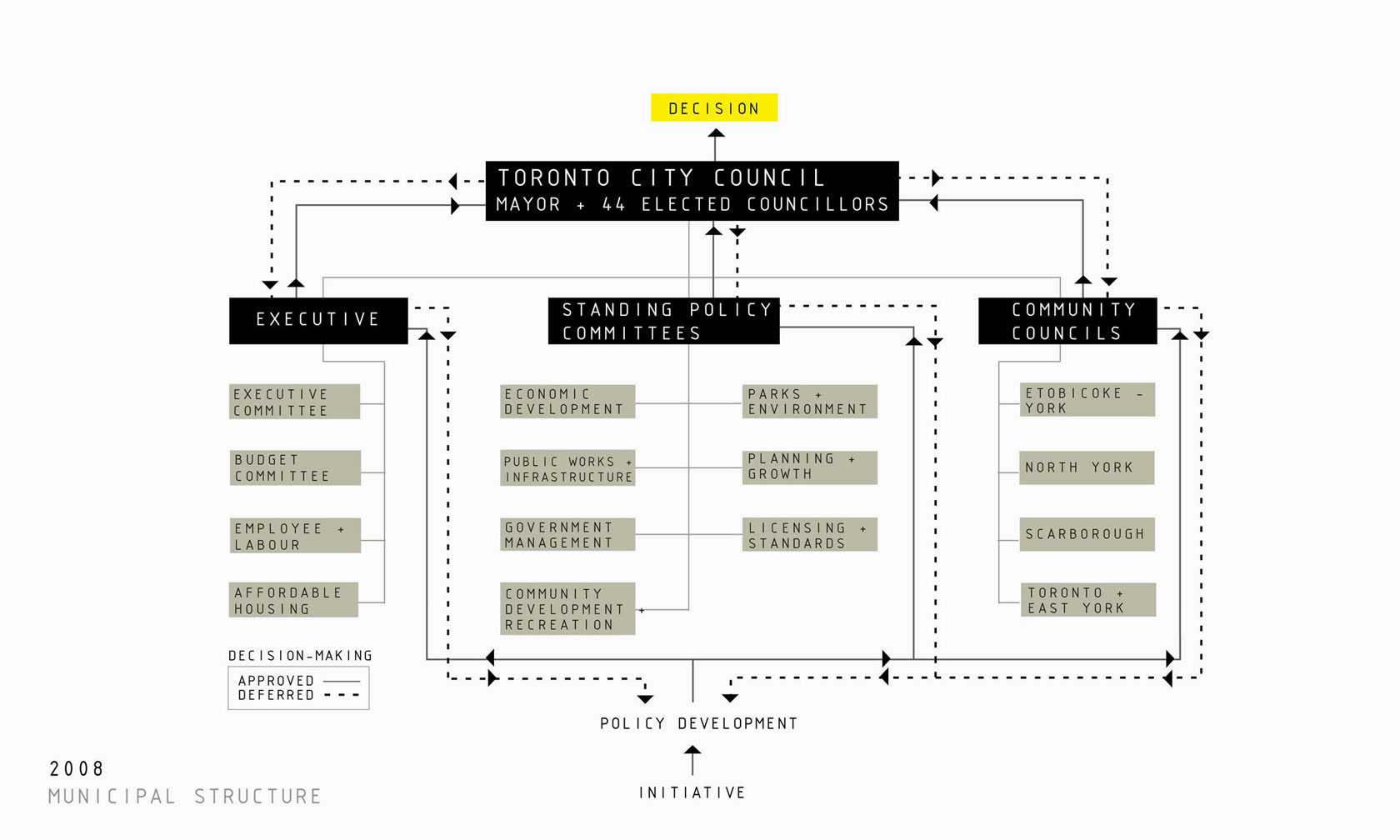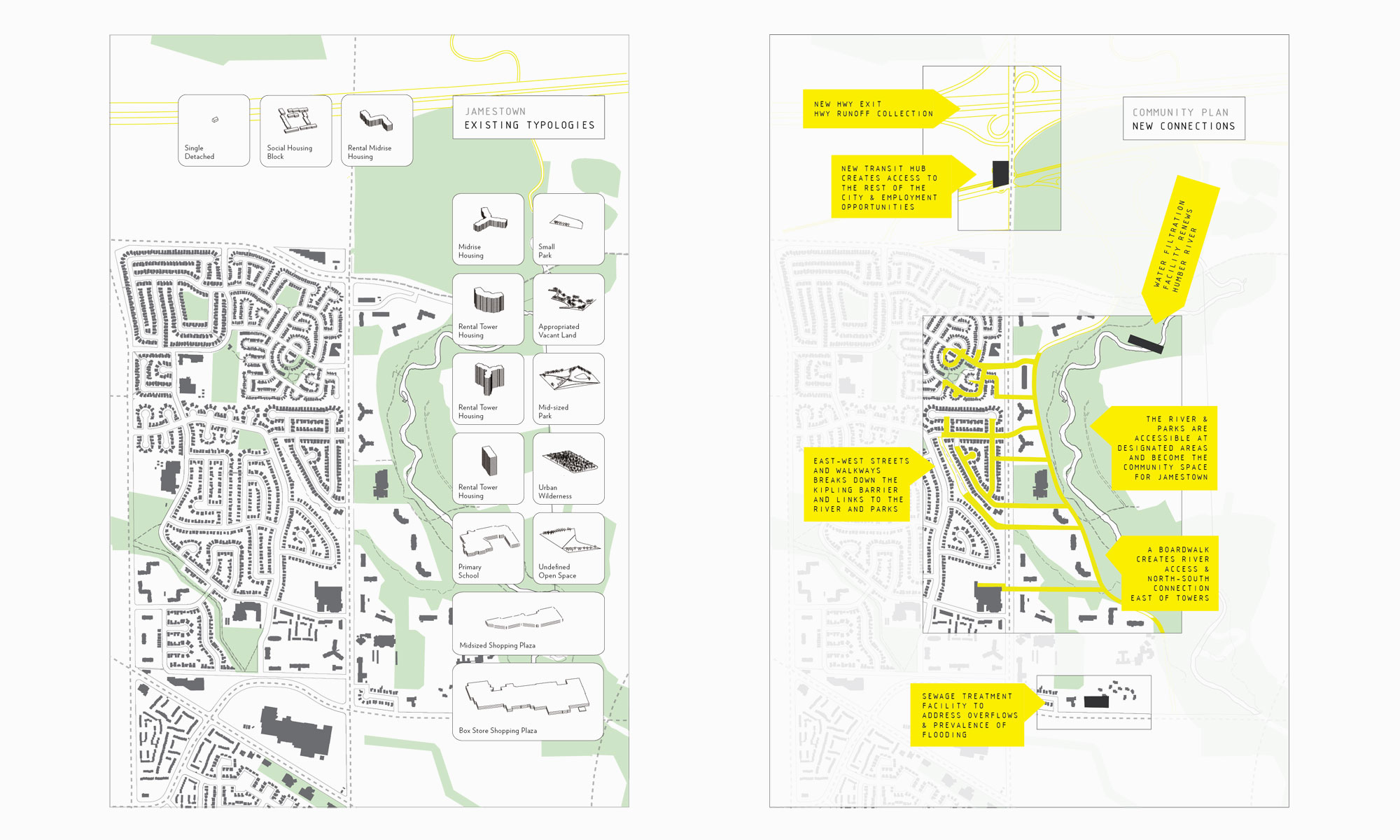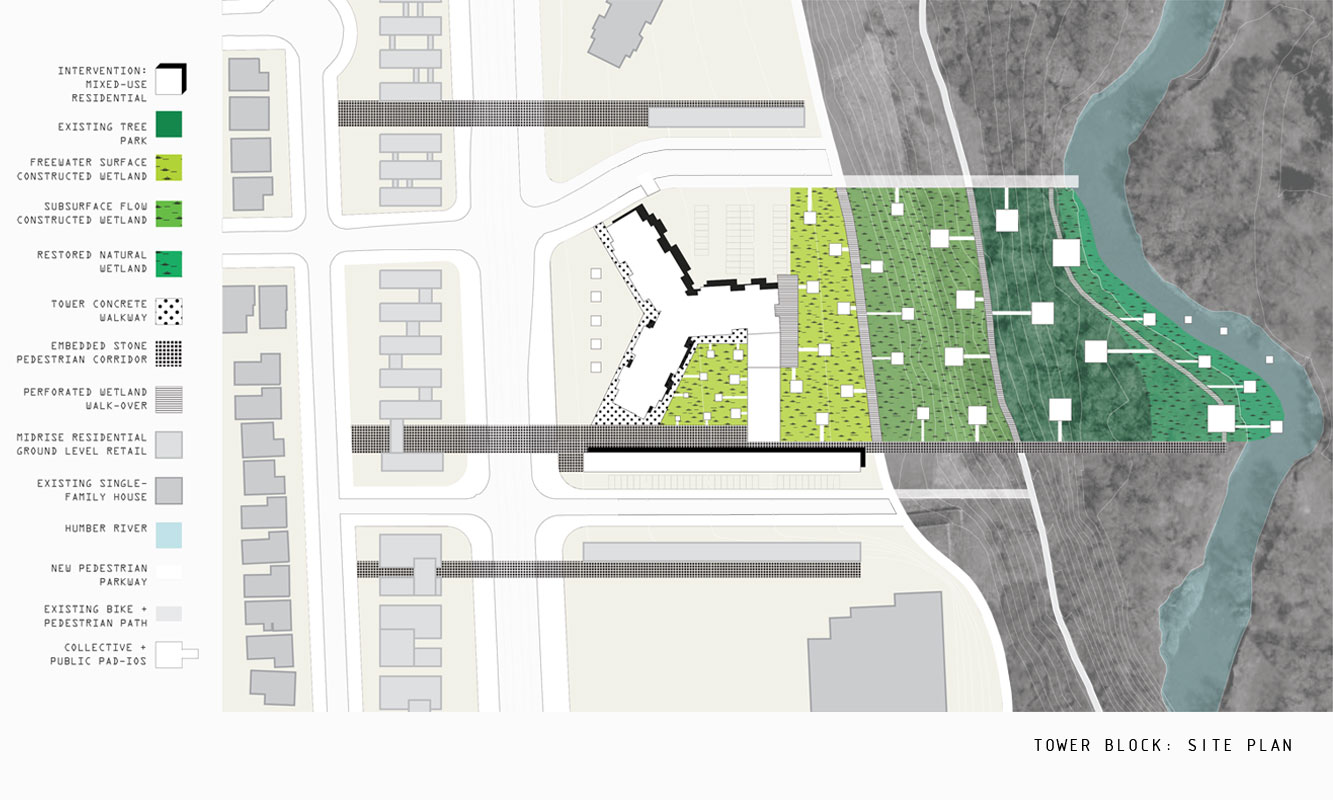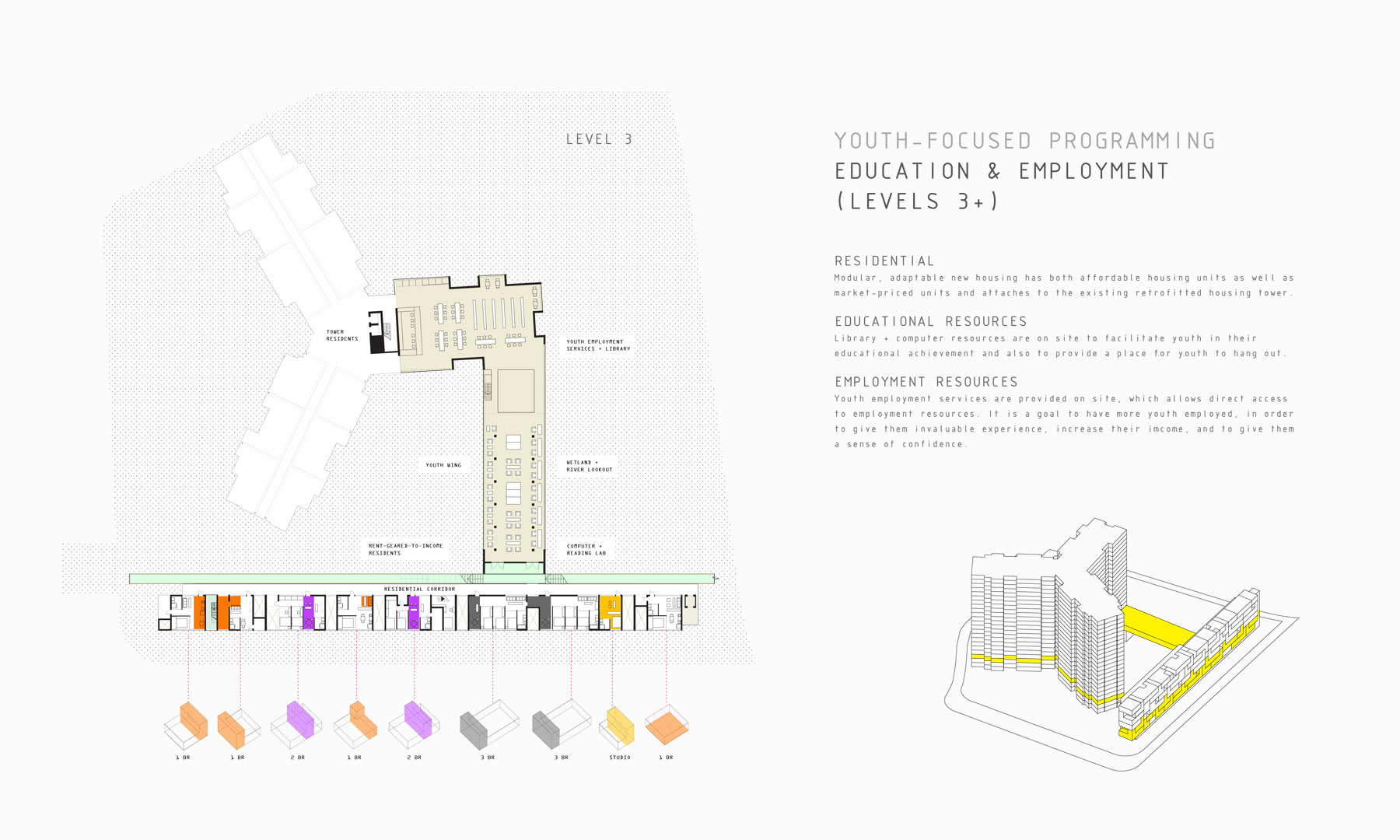(02 Neighbourhood)
Jamestown Neighbourhood
What — A study into Toronto's Jamestown Neighbourhood, a neighbourhood confronting issues of gang violence and poverty, and a multi-scalar response involving a restructure in governance, youth initiatives, housing, the Humber River, public space and making connections.
Where — Jamestown, Toronto 2009
A Priority Neighbourhood
The Jamestown Neighbourhood in North-West Toronto has been identified as one of thirteen "Priority Neighbourhoods" by the City of Toronto and the United Way of Great Toronto. Some of the greatest obstacles confronting the community include a high incidence of gang and drug-related activity, a low level of safety and security, an overall markedly low income, and a high rate of unemployment. It is a neighbourhood with a higher than average population of youth, but has one of the lowest levels of educational achievement in Toronto, which is associated with its gang and drug culture. Despite these obstacles, however, Jamestown is a community full of promise with its youthful vitality, diverse population and its proximity to one of Toronto's greatest ecological sites: The Humber River.




This proposal began with data collection and critical research which involved historical data, statistical data, spatial data, mapping and analysis, site interviews, site documentation, analysis of municipal governance, and so forth. The objective was to gain a more detailed understanding of the underlying dynamics contributing to the conditions of the neighbourhood, thereby establishing a sense of where opportunities for change may lie. Ultimately, it was apparent that change would need to occur at various scales and involve a multi-scalar approach. Part (I) proposes at the scale of the neighbourhood, while Part (II) proposes at the scale of the city tower block, and subsequently of the residential buildings.
I. Jamestown: Making Connections
The goal is to first and foremost, disengage the barrier and segregation between west of Kipling and east of Kipling; between detached average income family homes and high density, low income housing; the purpose of which would be to create a platform for community interactions and direct social engagements between all community groups, in order to create a cohesive community unit. This would be achieved through the restoration of the Humber River through river water filtration, environmental remediation and landscaping, as a central park and public space for the community; access to this major site would be the key component that begins bridging the neighbourhood’s divides. The axes of concentration would be east-west axes in the form of small streets, pedestrian thorough ways and building orientations in order to create a permeability between west of Kipling, east of Kipling and the Humber River. New mixed-use, mixed-income, supportive housing as well as shops and restaurants are proposed along these streets as well as Kipling Avenue.
In addition, Jamestown's location at the North-West edge of the city, coupled with its inefficient public transit, creates a lack of connection to the rest of the city. A significant way to increase overall employment would be to create access to jobs around the city and in the Greater Toronto Area. An investment in connecting rapid transit and GO transit to Jamestown would not only increase the chance of lowering unemployment, but would also allow the neighbourhood to be a destination for the rest of the city.





II. Tower Block Model
A Youth-based Approach
Wetland Discovery Program: A Wetland Discovery Program is introduced to tower blocks as a youth initiative, taking advantage of the ecological history of the Humber River. The surrounding ravine has been identified as a wetland marsh, but one that has been in need of remediaton. The benefits of restoring the wetland are multifold: It would keep the Humber River clean, control stormwater runoff, act as a filter for the housings’ grey-water system, become a platform for youth initiatives and education, become a public park for the neighbourhood.
Educational Resources: Library + computer resources are on site to facilitate youth in their educational achievement and also to provide a place for youth to hang out.
Employment Resources: Youth employment services are provided on site, which allows direct access to employment resources. It is a goal to have more youth employed, in order to give them invaluable experience, increase their imcome, and to give them a sense of confidence.
Retail + Cafe: The main level of the new housing hosts retail, a cafe and a recreation/meeting room.
Gym + Hang Outs: The on site gym, afterschool space, patio, and wetland spaces become a spot for youth to engage in activities and to hang out surrounded by nature.
Cultural Space + Theatre: A public multipurpose room can transition into a movie theatre as well as stage for youth to develop productions. It can also function as a gallery space, for youth workshops as well as for general community functions.
Tower Block Housing
Modular, adaptable new mixed-use housing has both affordable housing units as well as market-priced units and attaches to the existing retrofitted housing tower (and overlooks the humber river park and kipling)
Access + Enclosure: A crosswalk, as part of the new connections across Kipling, draws residents into the wetland courtyard or has the option of using the ravine walkup, which leads to the ravine and river park. The new housing along the East-West axis defines to the open space formerly surrounding the tower.


